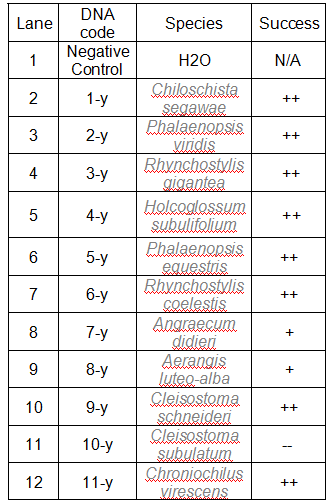This article identifies the usability of ycf1 using primers to identify the plasid gene within the magnoliid taxa. This hypothetical chloroplast open reading frame 1, more commonly identified as ycf1, codes a region of 5,500 base pairs, and is virtually present in many plastid genomes. It is typically used in analyzing orchids and Pinus, making the use of it in magnoliids unique and somewhat rarely studied. Using an array of species across many families, the samples were able to specifically identify the usage of ycf1. An array of primers were used to amplify various portions, to amplify various nucleotide regions. By sequencing roughly 2000 base pairs within ycf1 in over 20 individuals, the researchers were able to examine the phylogenetic utility relative to other plastid regions. The genera Deeringothamnusand Asimina (Annonaceae) was used due to its close proximity. Through various PCR deviations using different primers revealed the discrepancy of ycf1 among species, discovering the higher number of informative characters. Finally, the resulting factors proved that ycf1 proves to be easily amplified and sequenced vastly more than other common markers such as matK and trnL-F. The study indicates that ycf1 has great potential utility.
References:
Neubig, K., & Abbott, J. (2010). Primer development for the plastid region ycf1 in annonaceae and other magnoliids. American Journal of Botany, Retrieved from http://www.amjbot.org/content/97/6/e52.full





You must be logged in to post a comment.